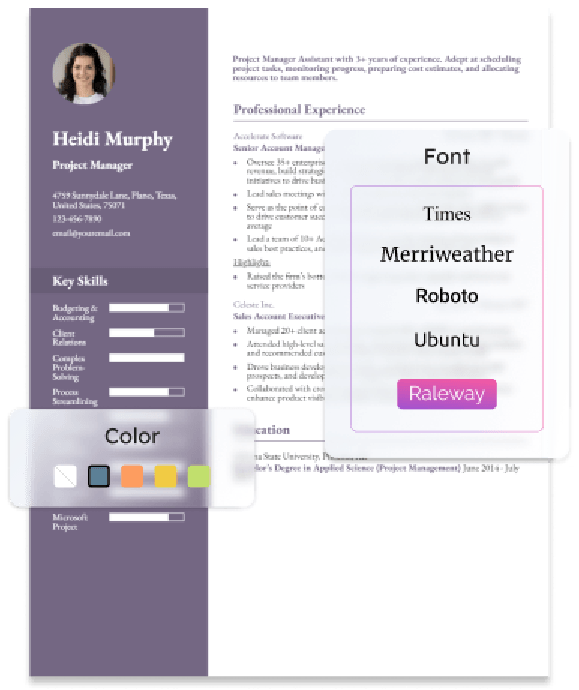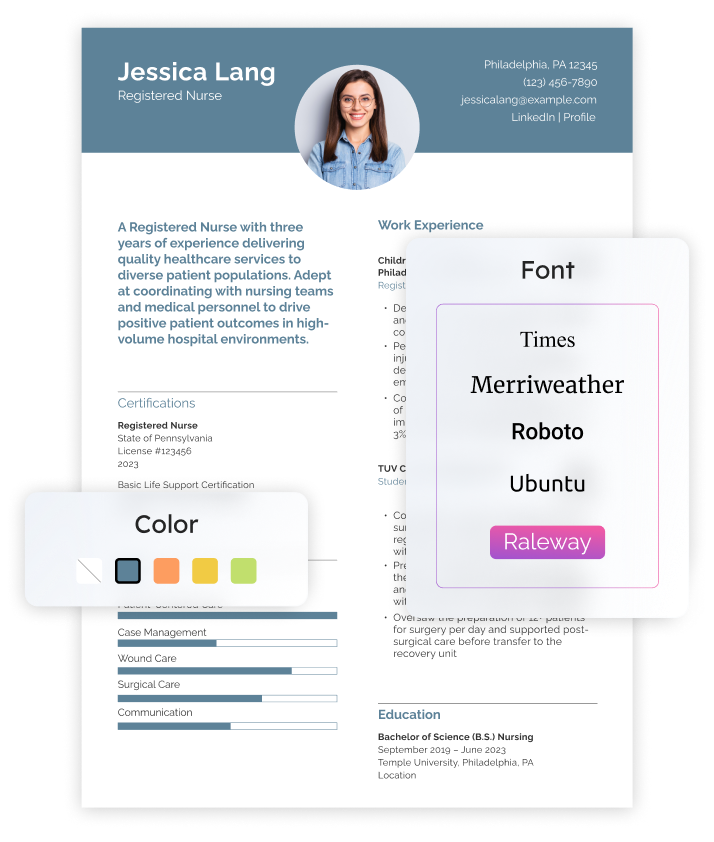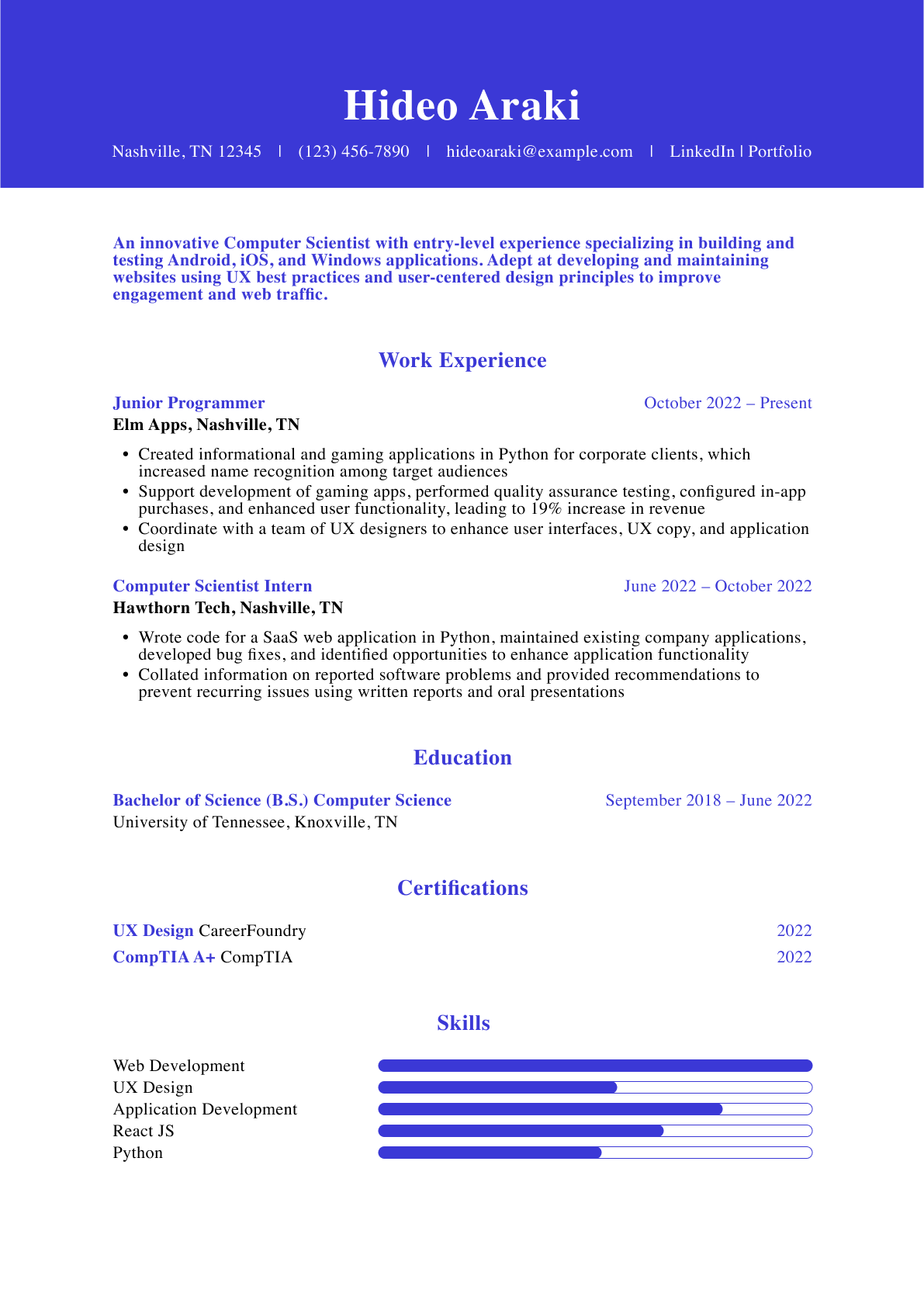Your medical doctor resume must reflect your exceptional skills in patient care, diagnosis, and treatment, showcasing your dedication to improving the quality of life and driving positive clinical outcomes. In this comprehensive guide, we’ll offer expert insights and valuable tips to assist you in crafting a compelling, results-driven resume. You’ll learn how to highlight your achievements and communicate the breadth of your medical experience.
“Medical doctor resumes should emphasize clinical excellence, patient outcomes, and collaboration. Let your medical impact speak through your accomplishments.”
— Carolyn Kleiman, Resume and Career Advisor
Most Popular Medical Doctor Resumes
Board Certified Medical Doctor Resume
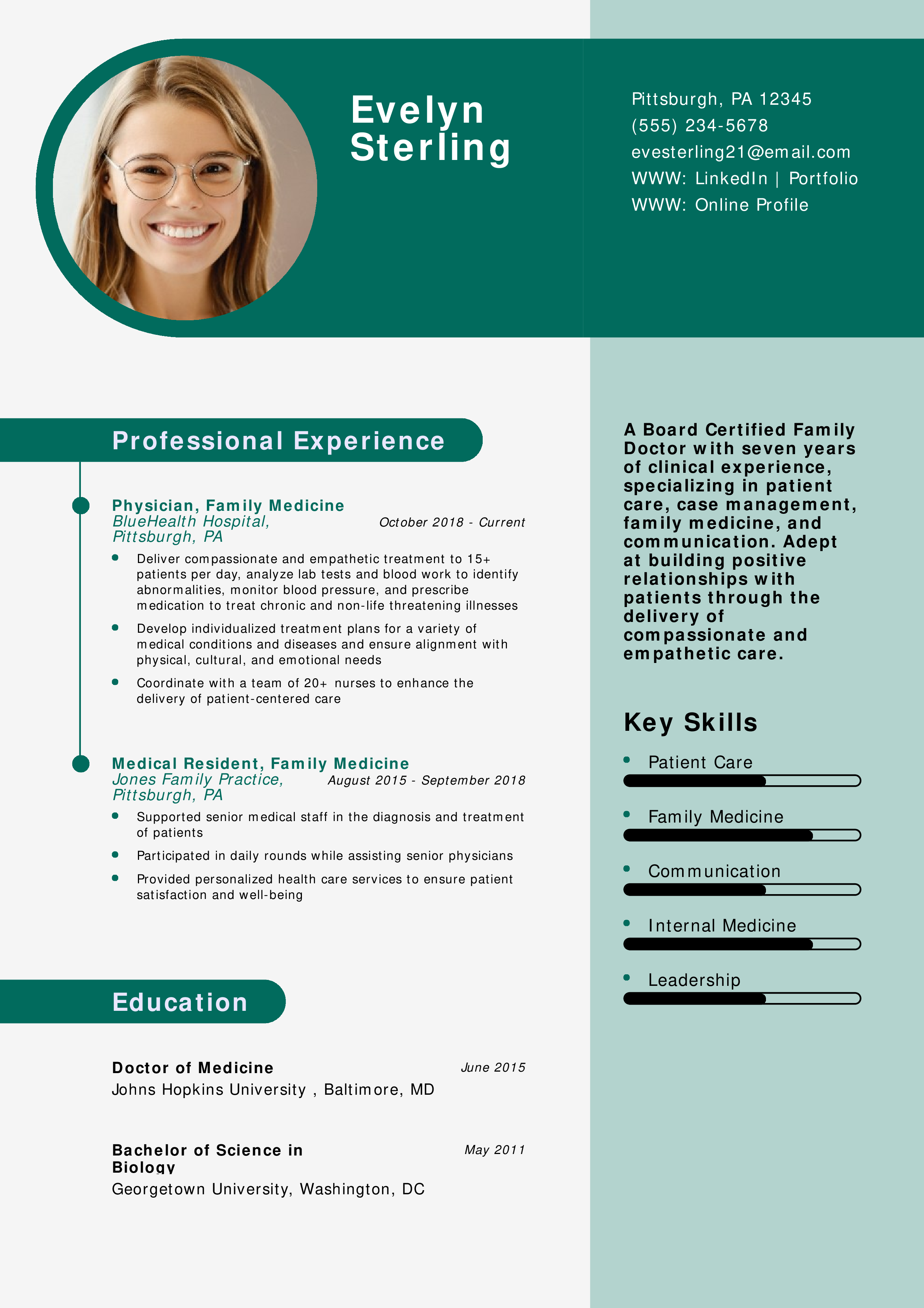
Board Certified Physician Resume
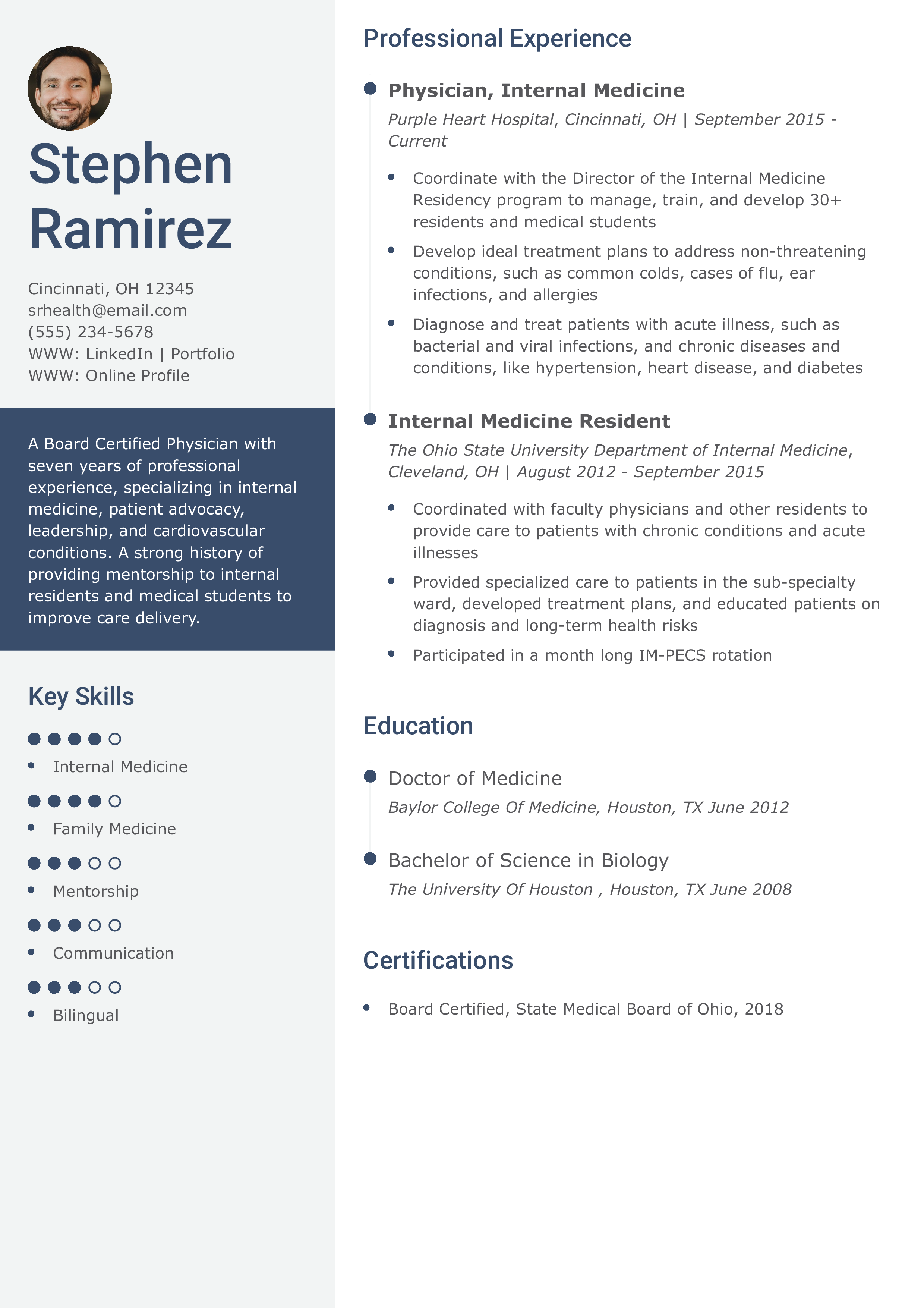
Senior-Level Physician Resume
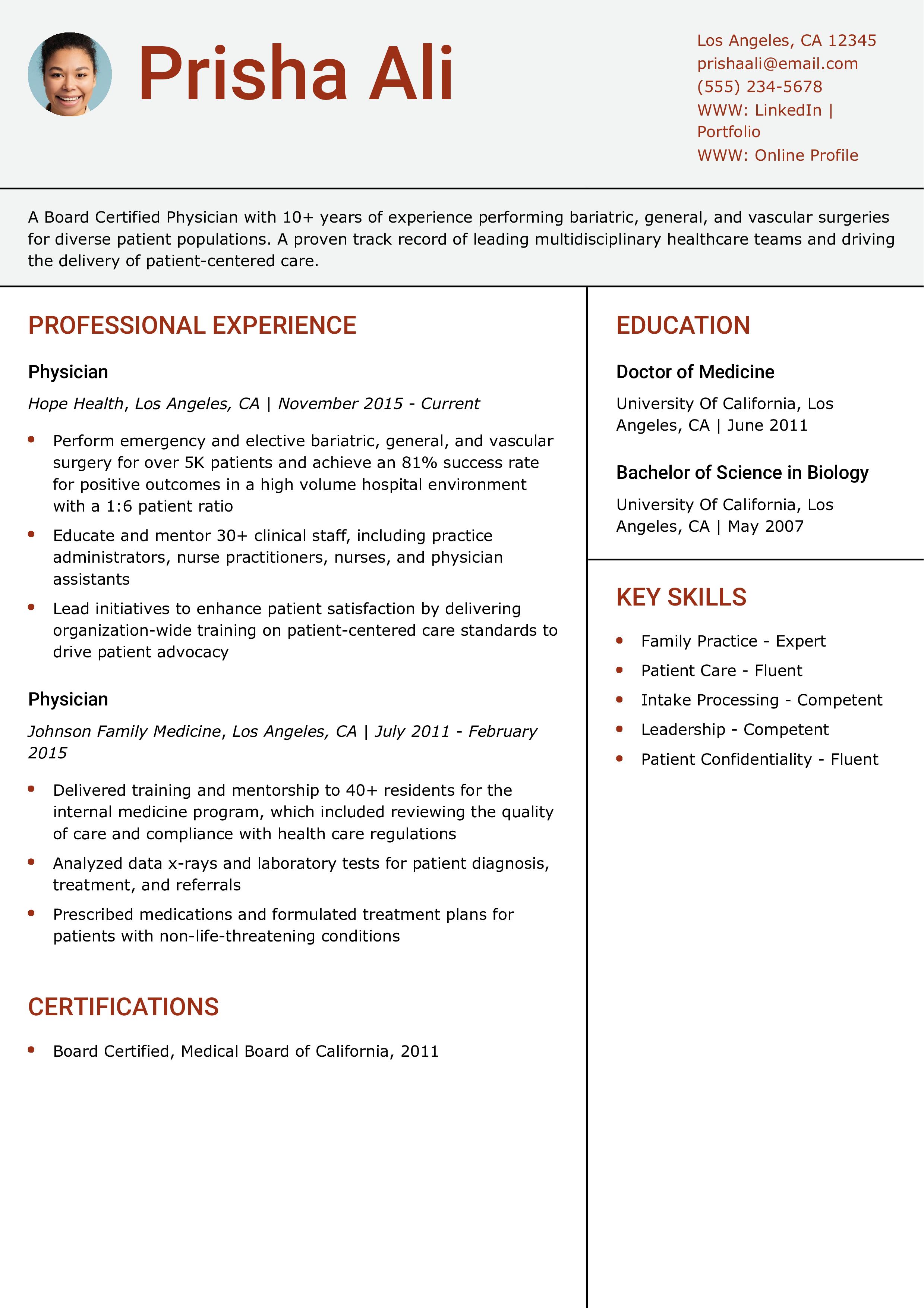
Pediatrician Resume
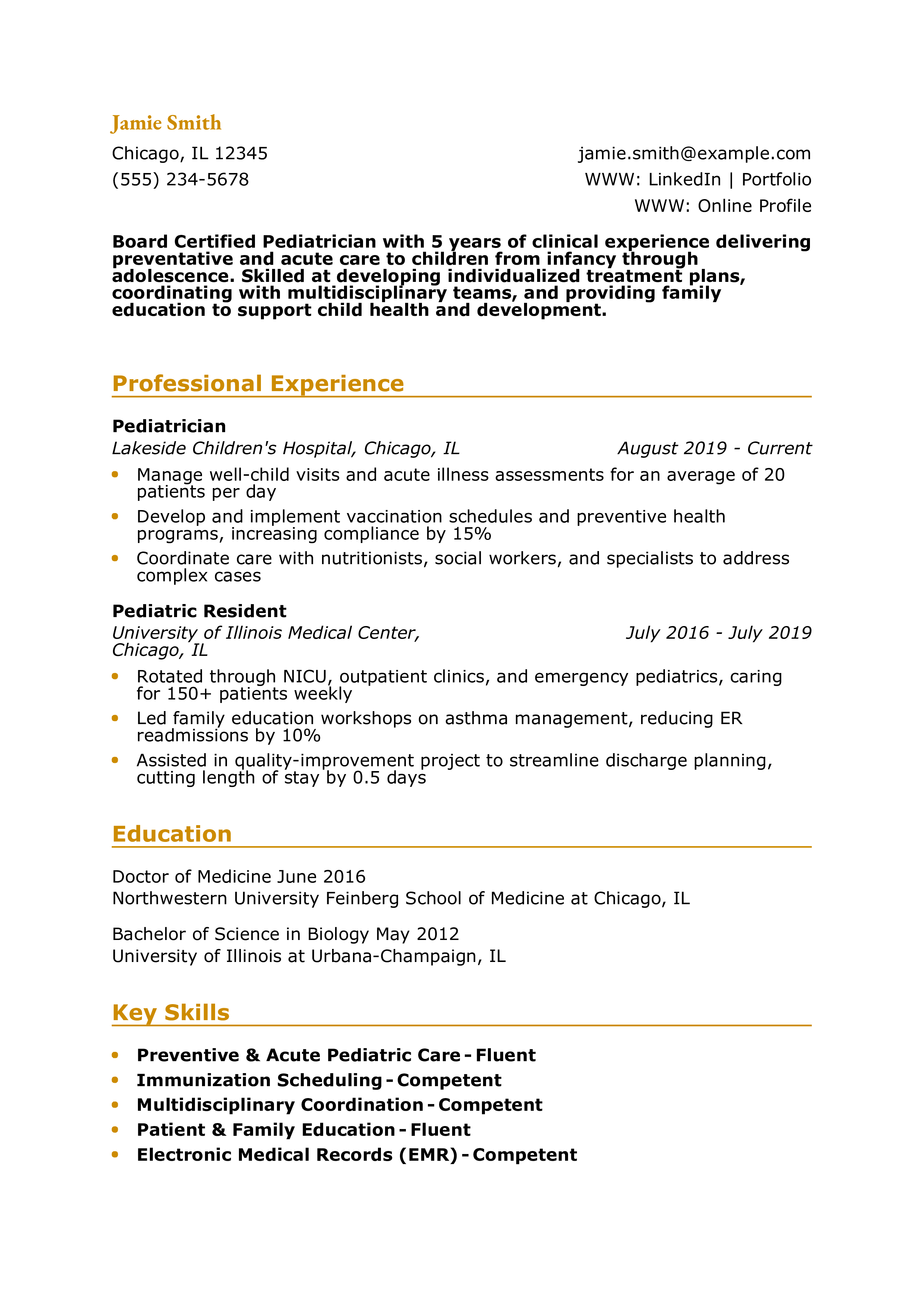
Why This Resume Is a Great Example
Jamie Smith’s resume clearly quantifies patient volumes and program improvements, like the 15% increase in vaccination compliance, and highlights cross-disciplinary collaboration to manage complex pediatric cases.
Key Tips
Demonstrate impact by including percentage improvements in patient outcomes or program compliance. For guidance on structuring your education section, see How to List Your Education on a Resume.
Obstetrician–Gynecologist (OB/GYN) Resume

Why This Resume Is a Great Example
Alex Johnson’s resume highlights measurable clinical outcomes, like lower C-section rates and increased breastfeeding success, and underscores research involvement, which can set candidates apart for academic and clinical roles.
Key Tips
Quantify clinical improvements and include research activities to demonstrate both patient-care impact and academic engagement. For tips on showcasing your professional certifications, see How to List Certifications on a Resume.
Emergency Medicine Physician Resume

Why This Resume Is a Great Example
Taylor Lee’s resume focuses on critical metrics, like patient volume and wait-time reduction, and highlights leadership in life-saving procedures, showcasing readiness for high-pressure emergency environments.
Key Tips
Use specific timing and outcome data to illustrate your efficiency in acute care settings. For examples of strong resume summaries, see Resume Summary Examples.
Anesthesiologist Resume
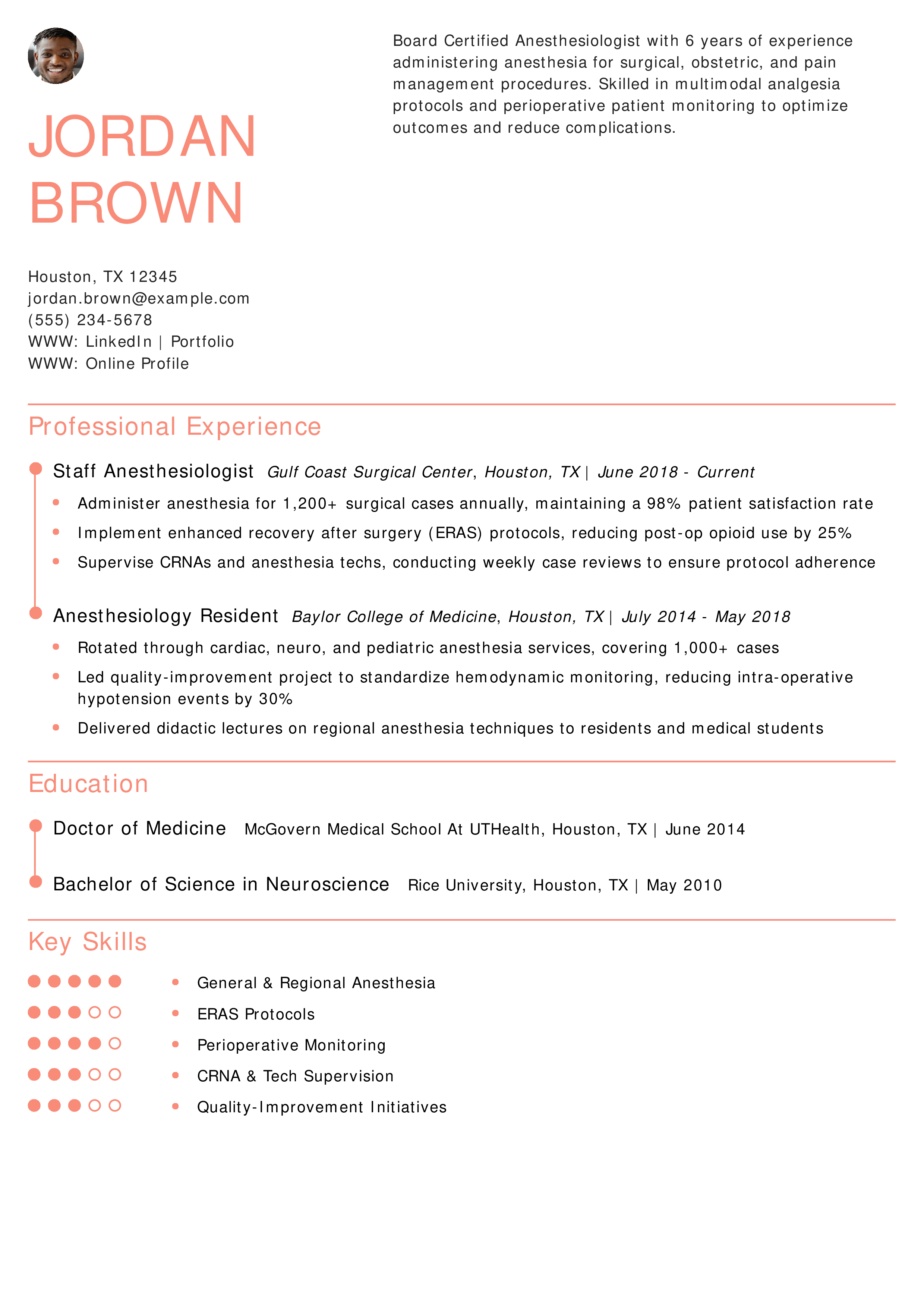
Why This Resume Is a Great Example
Jordan Brown’s resume quantifies case volumes and clinical improvements, such as opioid reductions, and highlights leadership in protocol implementation, demonstrating both technical and supervisory strengths.
Key Tips
Highlight protocol-driven outcomes and supervisory roles to underscore both clinical and leadership capabilities. For advice on structuring your resume layout, see Best Resume Formats.
Radiologist Resume
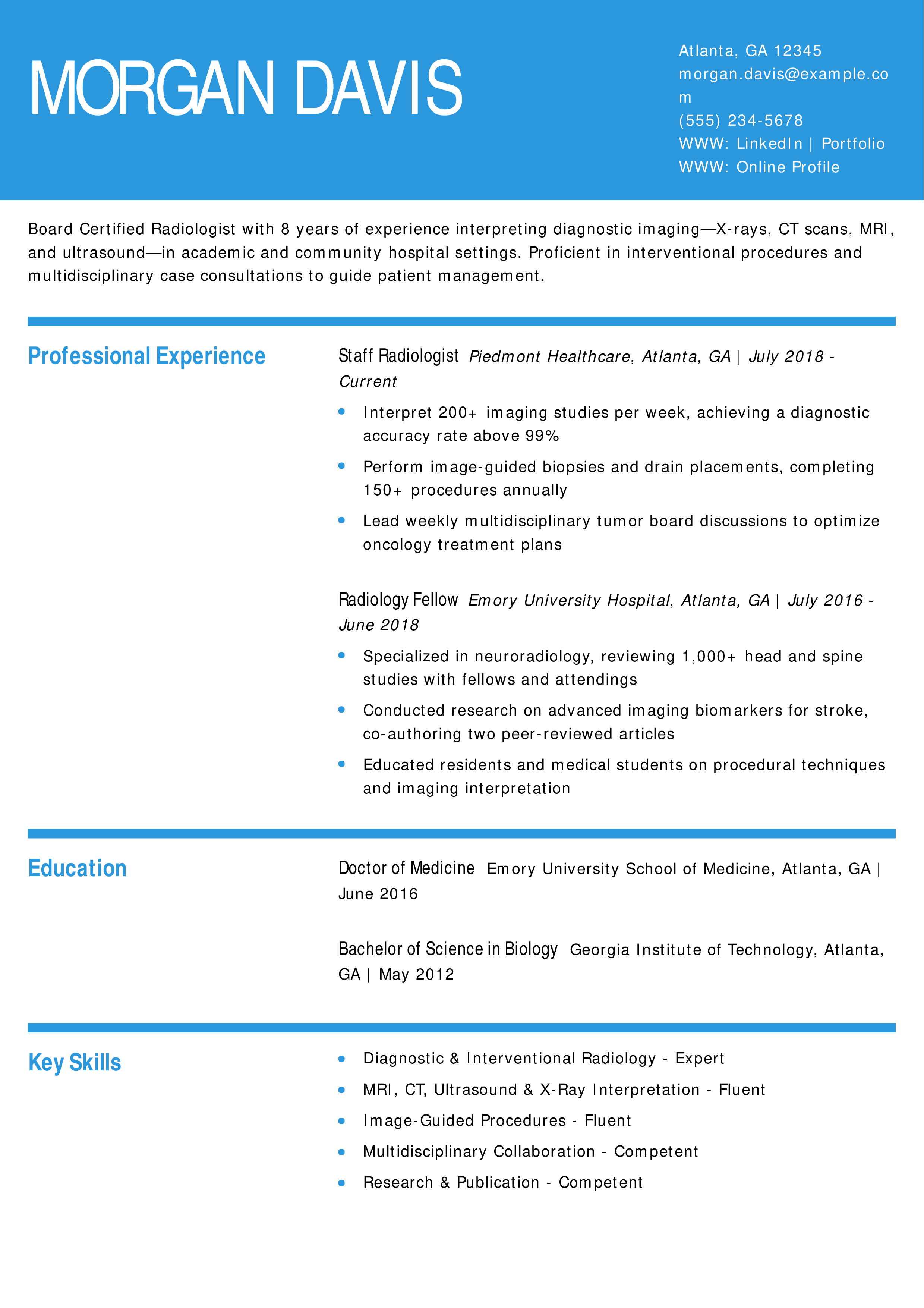
Why This Resume Is a Great Example
Morgan Davis’s resume highlights both high diagnostic volume and procedural expertise, quantifying studies interpreted and interventional cases performed, which underscores clinical proficiency and impact.
Key Tips
Include specific metrics, like weekly imaging volumes and procedure counts, to demonstrate your productivity and expertise. For more on structuring your resume effectively, see Best Resume Formats.
Dermatologist Resume
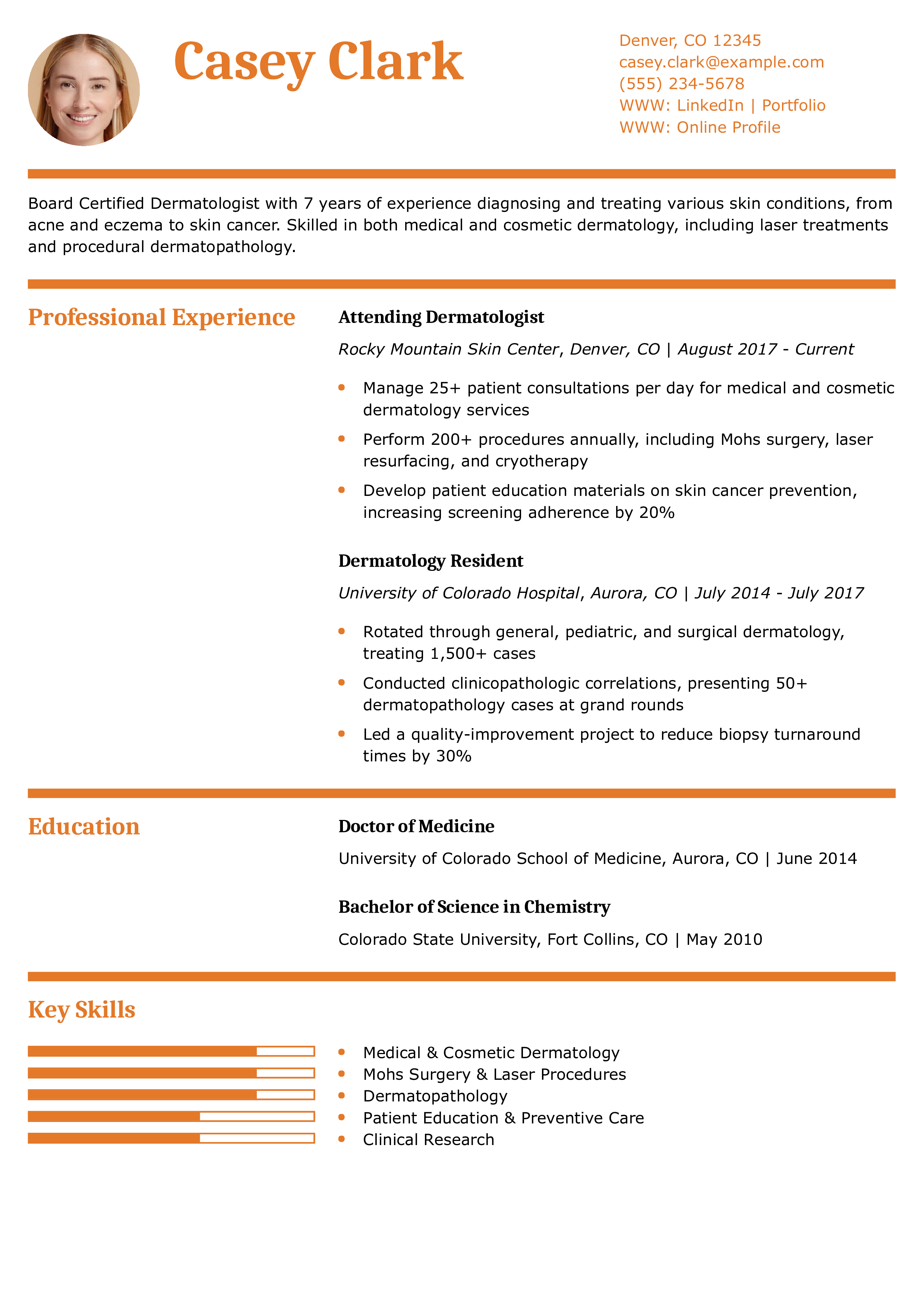
Why This Resume Is a Great Example
Casey Clark’s resume quantifies patient volume, procedural counts, and educational outcomes, showcasing both clinical breadth and patient-focused initiatives.
Key Tips
Highlight both medical and procedural metrics to demonstrate your full scope of practice. For advice on listing certifications and credentials, see How to List Certifications on a Resume.
Psychiatrist Resume
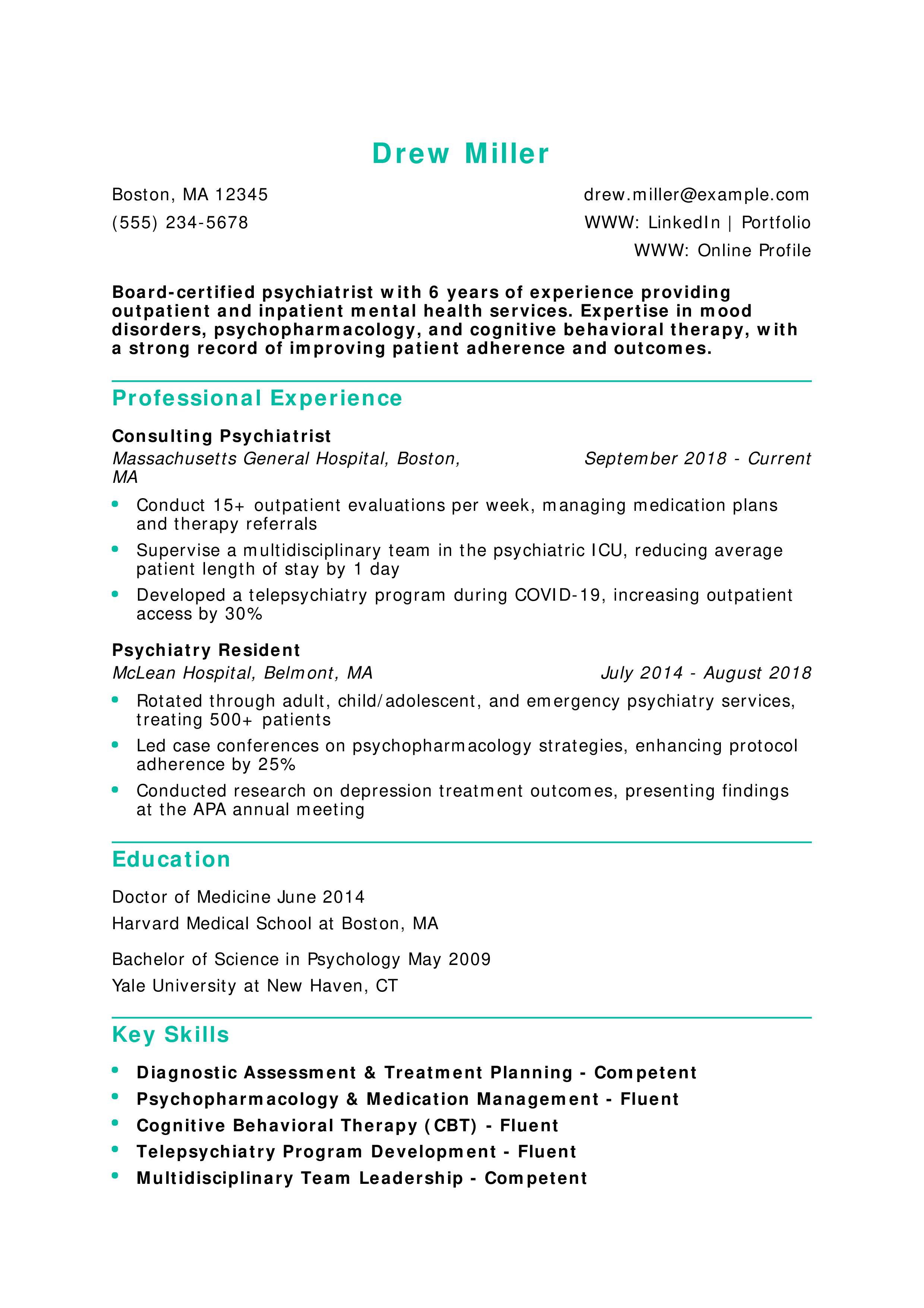
Why This Resume Is a Great Example
Drew Miller’s resume quantifies clinical improvements, such as reduced length of stay and increased telepsychiatry access, and highlights both supervisory roles and research contributions.
Key Tips
Include program development outcomes and patient metrics to illustrate your impact on service delivery. For guidance on crafting compelling objectives, see Resume Objective Examples.
Pathologist Resume
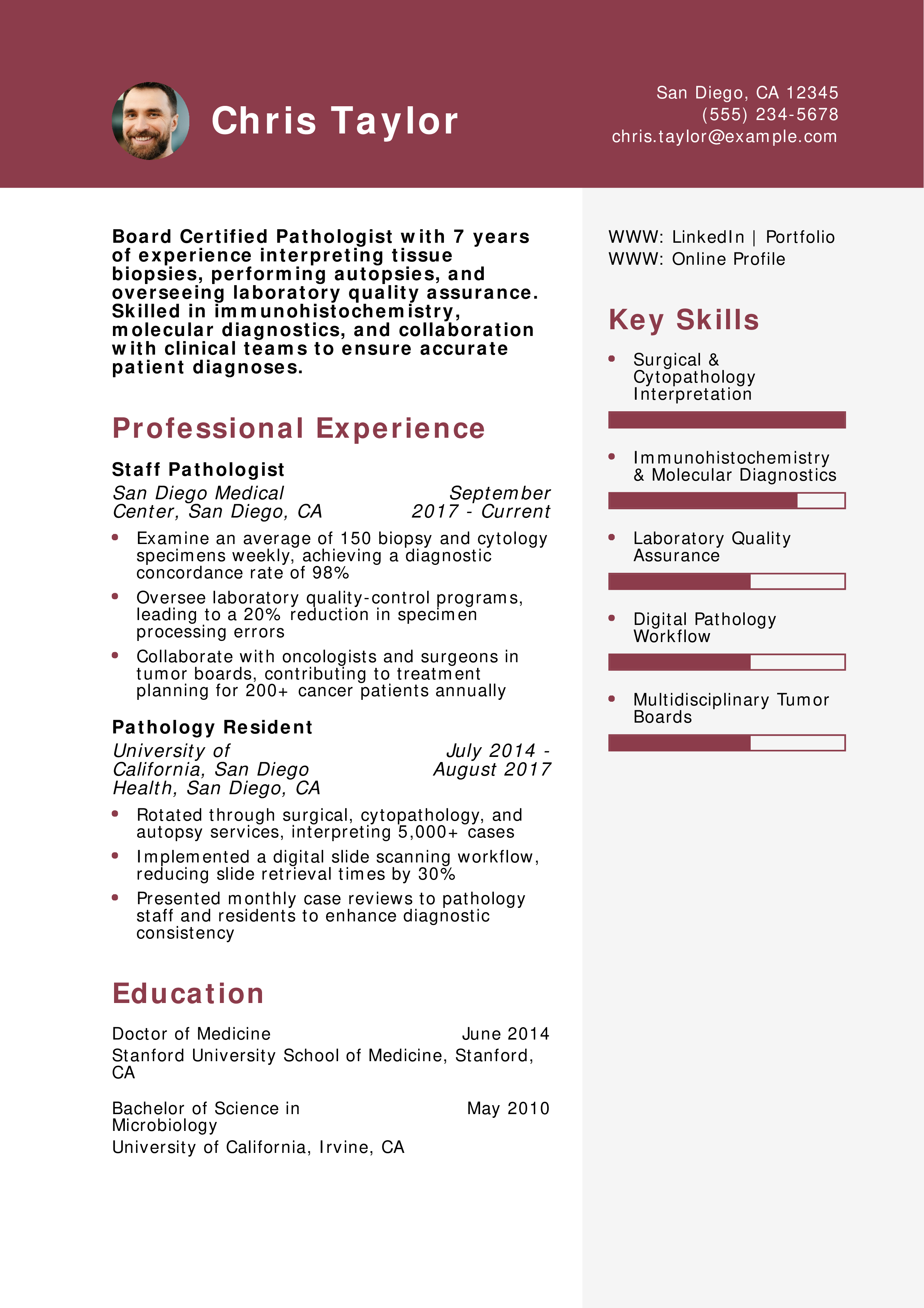
Why This Resume Is a Great Example
Chris Taylor’s resume quantifies both specimen volumes and quality improvements, showcasing technical expertise in diagnostics and leadership in lab process enhancements.
Key Tips
Highlight your diagnostic accuracy rates and workflow optimizations to demonstrate both precision and innovation. For guidance on structuring your resume effectively, see Best Resume Formats.
Oncologist Resume
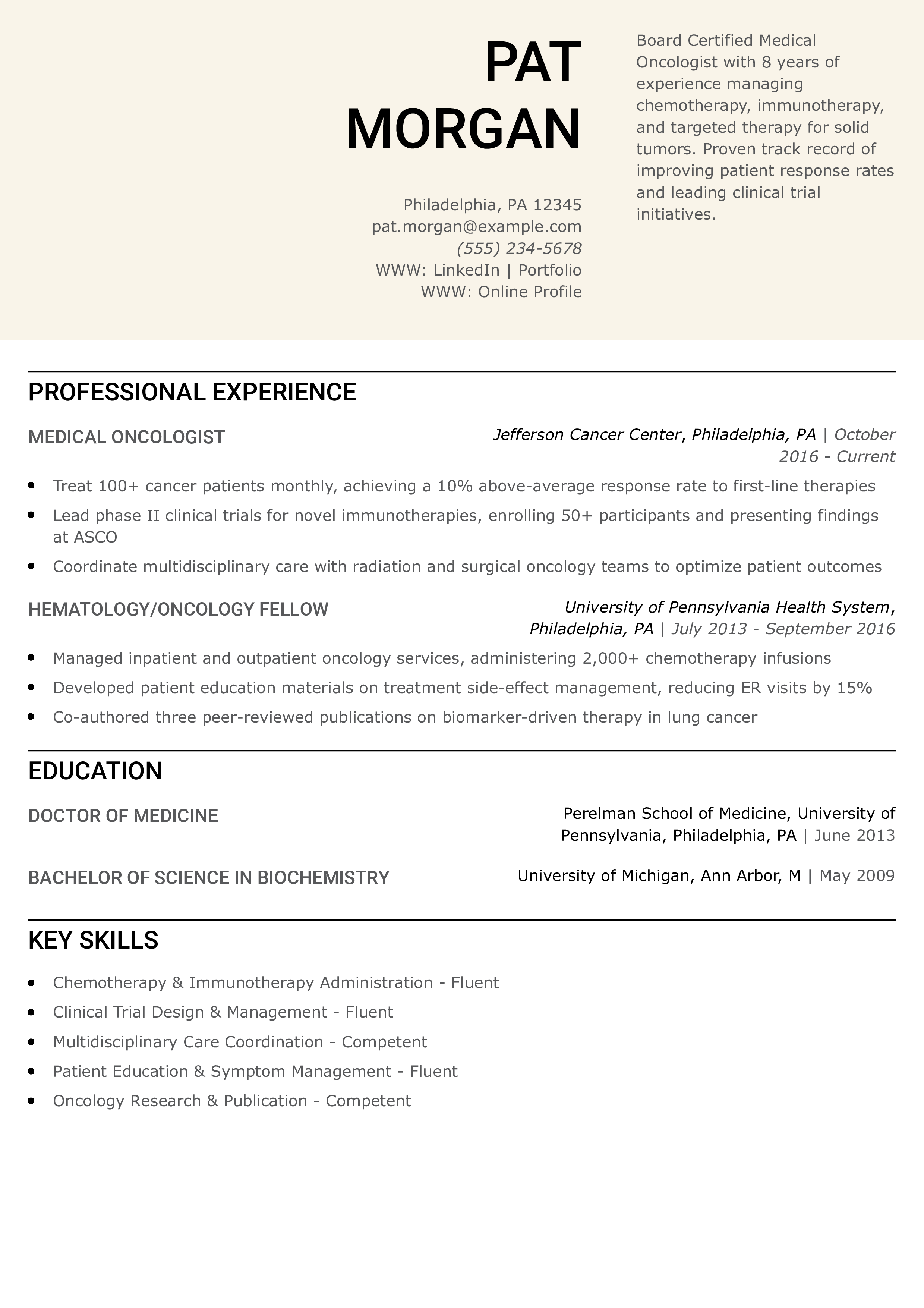
Why This Resume Is a Great Example
Pat Morgan’s resume highlights clinical trial leadership and patient outcome improvements, demonstrating both research acumen and hands-on oncology expertise.
Key Tips
Emphasize your trial enrollment numbers and patient response metrics to showcase both research impact and clinical proficiency. For advice on listing certifications, see How to List Certifications on a Resume.
Neurologist Resume
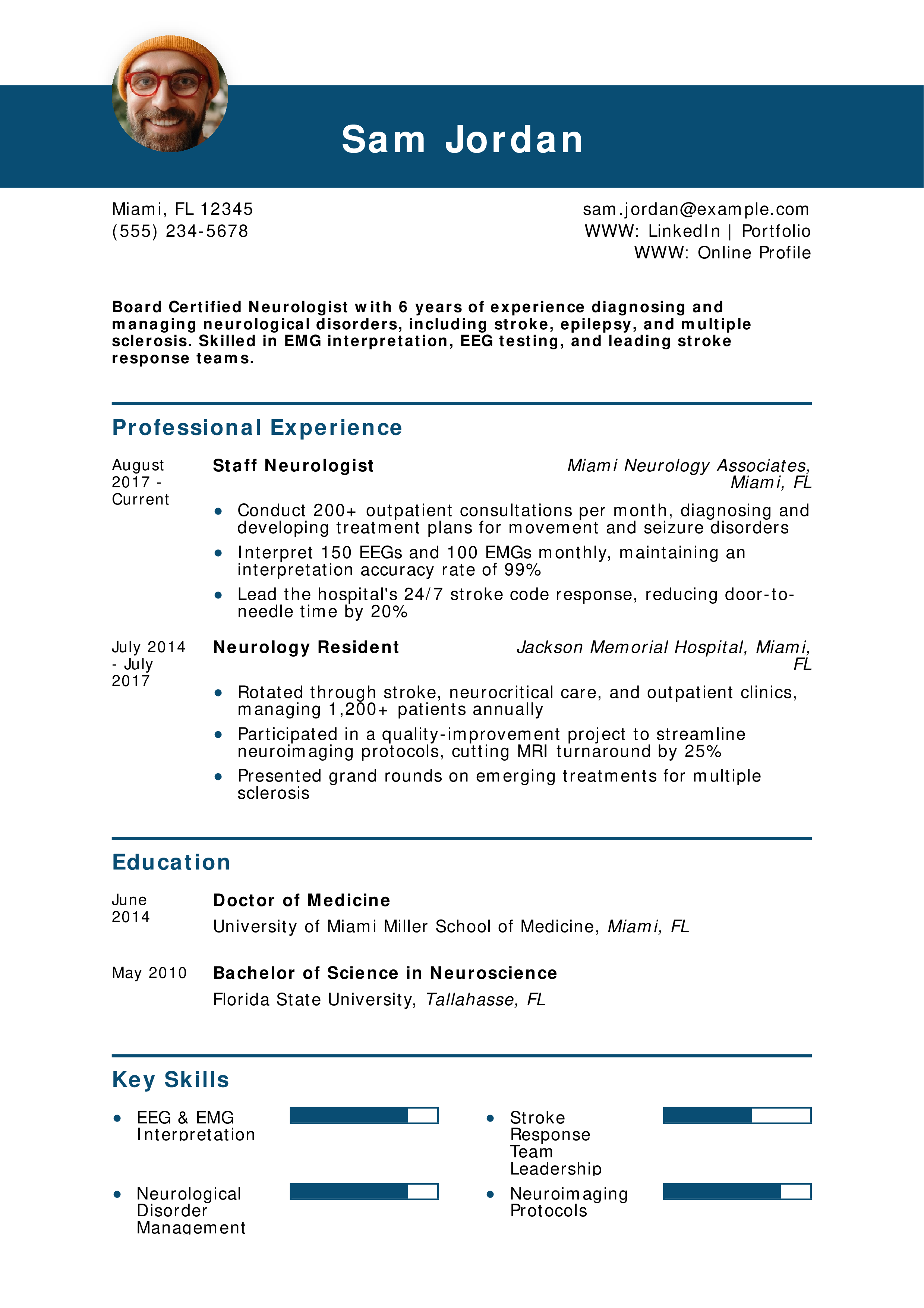
Why This Resume Is a Great Example
Sam Jordan’s resume ties rapid stroke response improvements and high diagnostic volumes to clear patient care metrics, underscoring both clinical excellence and leadership.
Key Tips
Highlight process improvements, like reduced door-to-needle times, to demonstrate your impact on critical care pathways. For guidance on resume summaries, see Resume Summary Examples.
Cardiologist Resume
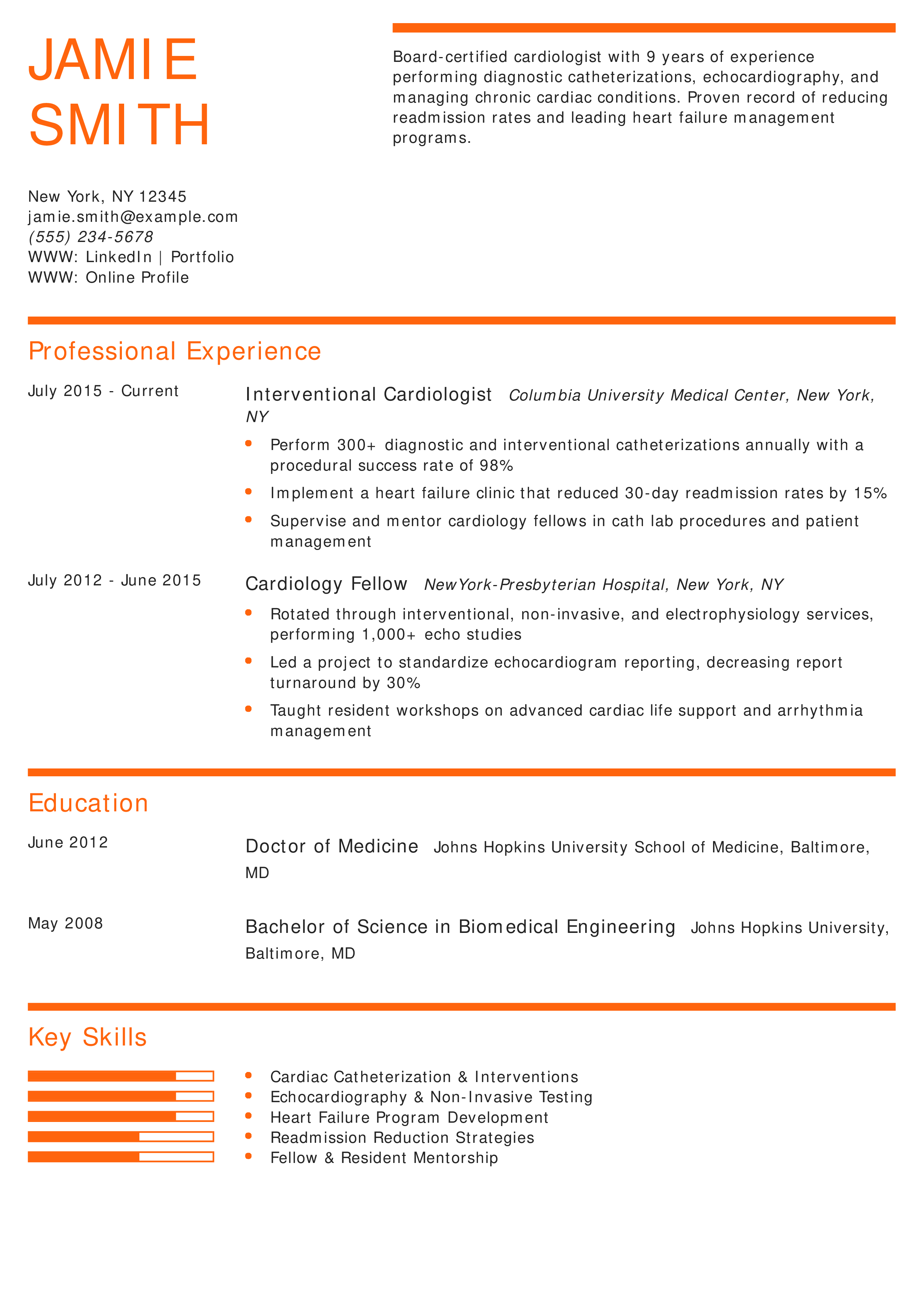
Why This Resume Is a Great Example
Jamie Smith’s resume quantifies procedural volumes and readmission improvements, showcasing both technical interventional skills and program leadership.
Key Tips
Include both procedural success rates and program outcomes to illustrate your comprehensive cardiology expertise. For tips on choosing the best fonts, see Best Font for Resume.
Endocrinologist Resume
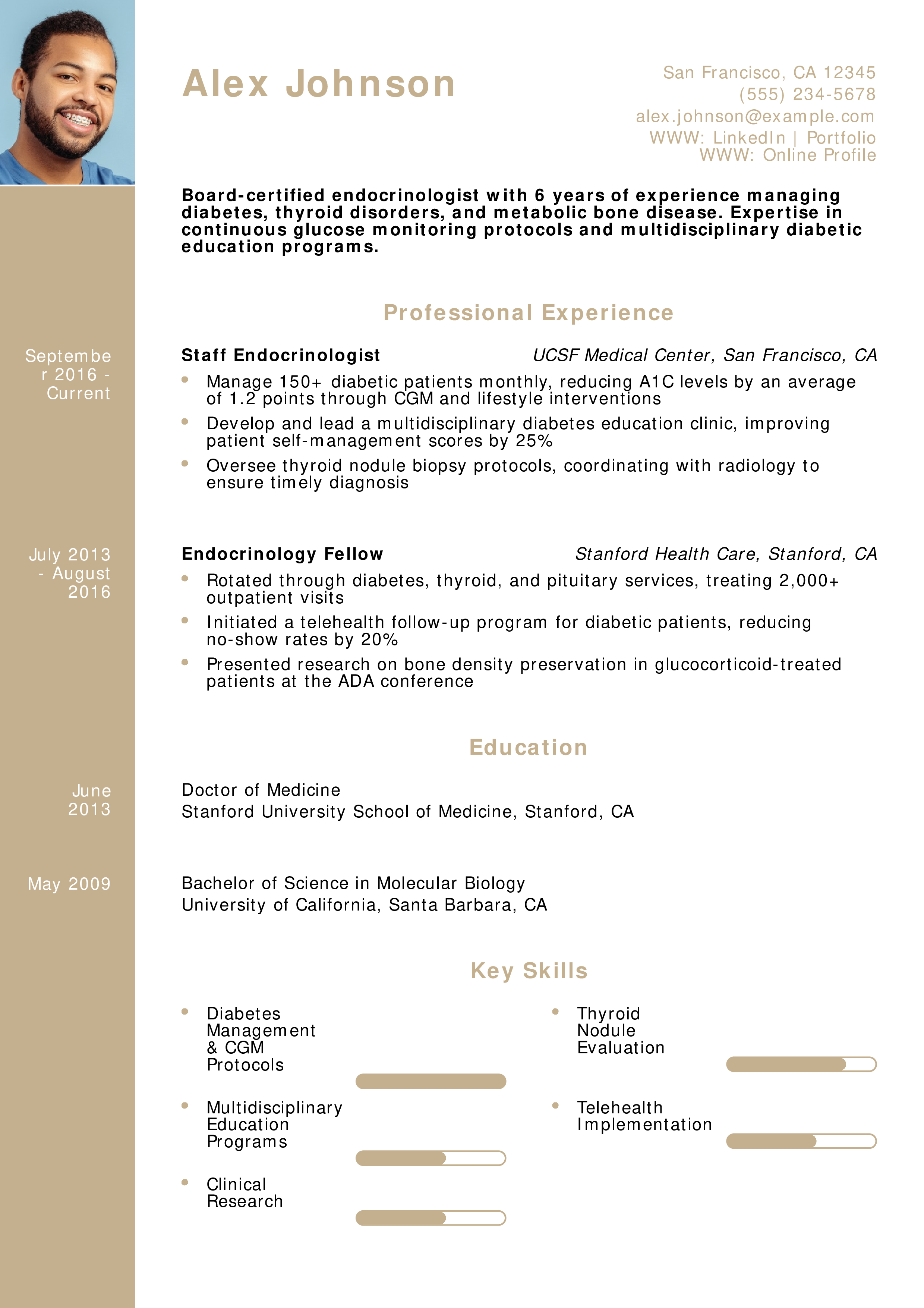
Why This Resume Is a Great Example
Alex Johnson’s resume ties measurable clinical improvements, like A1C reductions and no-show rate decreases, to program development, highlighting both patient care and innovation.
Key Tips
Quantify your patient outcome improvements and program metrics to showcase clinical impact. For guidance on resume objectives, see Resume Objective Examples.
Pulmonologist Resume
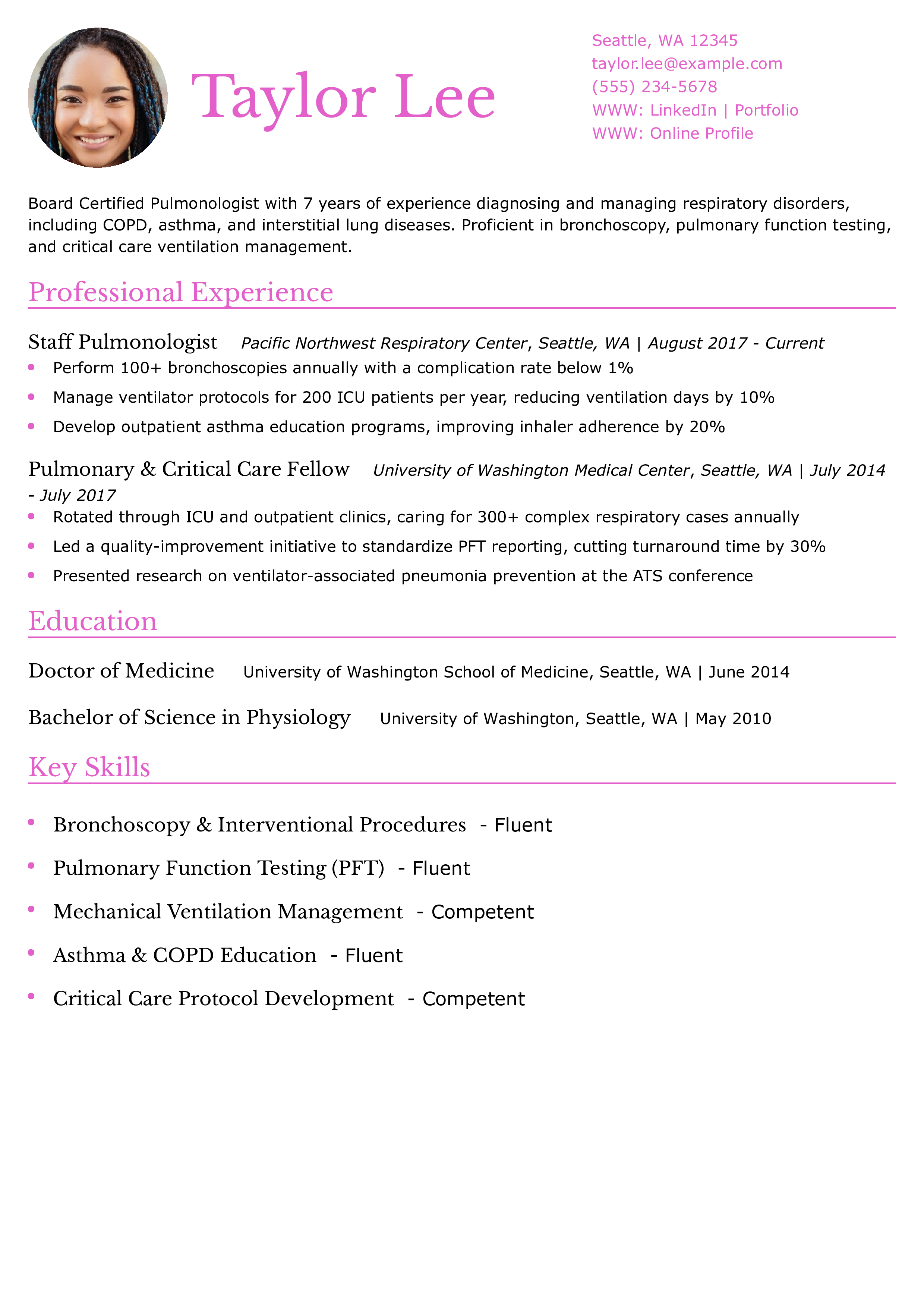
Why This Resume Is a Great Example
Taylor Lee’s resume quantifies procedural volumes, complication rates, and program outcomes, like the 20% inhaler adherence improvement, to showcase both clinical expertise and patient education impact.
Key Tips
Include specific metrics for procedures and patient outcomes to demonstrate your clinical proficiency. For more on what to include on your resume, see What to Put on a Resume.
Nephrologist Resume
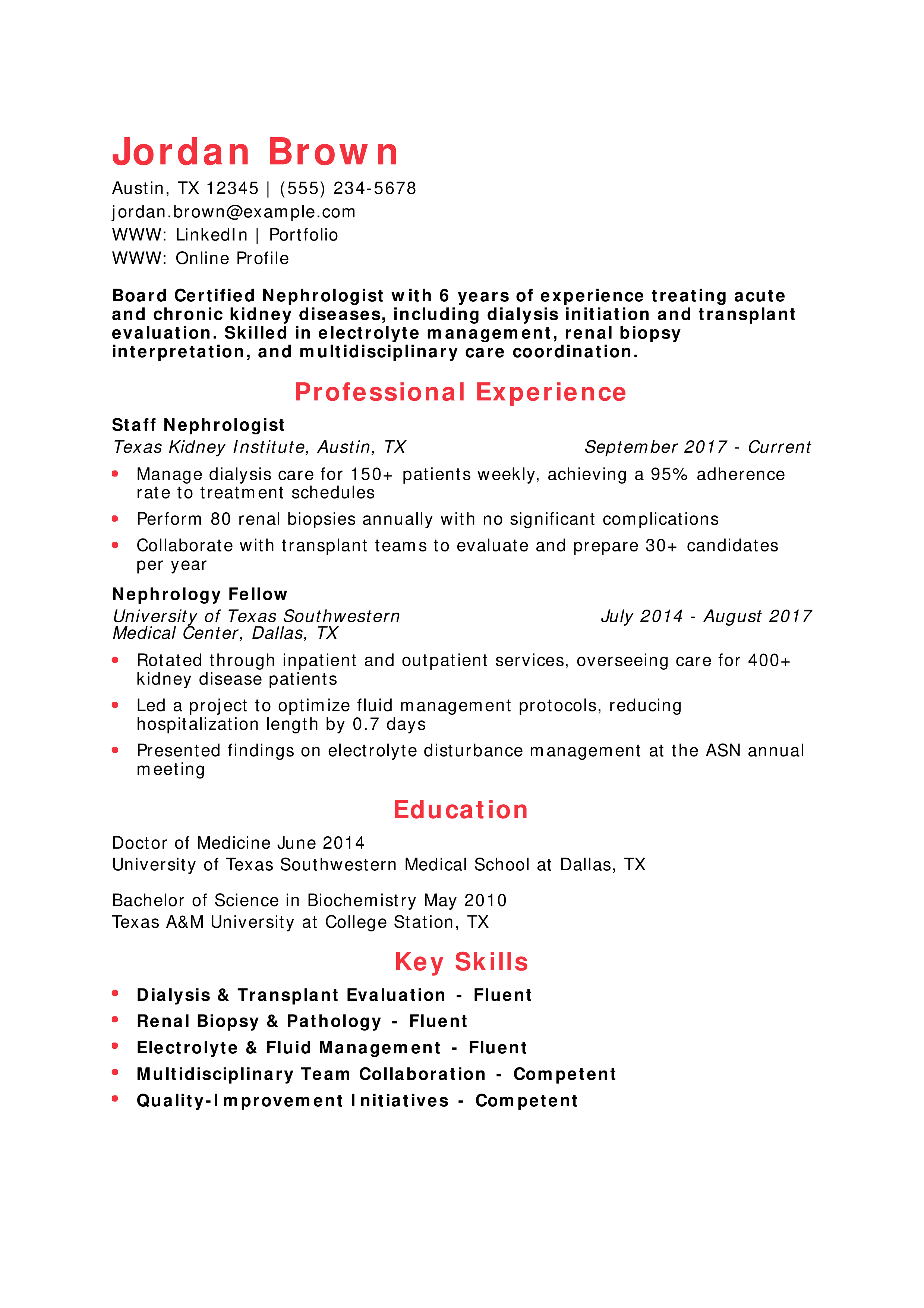
Why This Resume Is a Great Example
Jordan Brown’s resume ties patient adherence and protocol improvements, like reduced hospital stays, to clear clinical metrics, highlighting both patient-management skills and quality initiatives.
Key Tips
Emphasize patient-volume metrics and protocol outcomes to illustrate your impact on care efficiency. For guidance on listing references, see How to List References on a Resume.
Gastroenterologist Resume
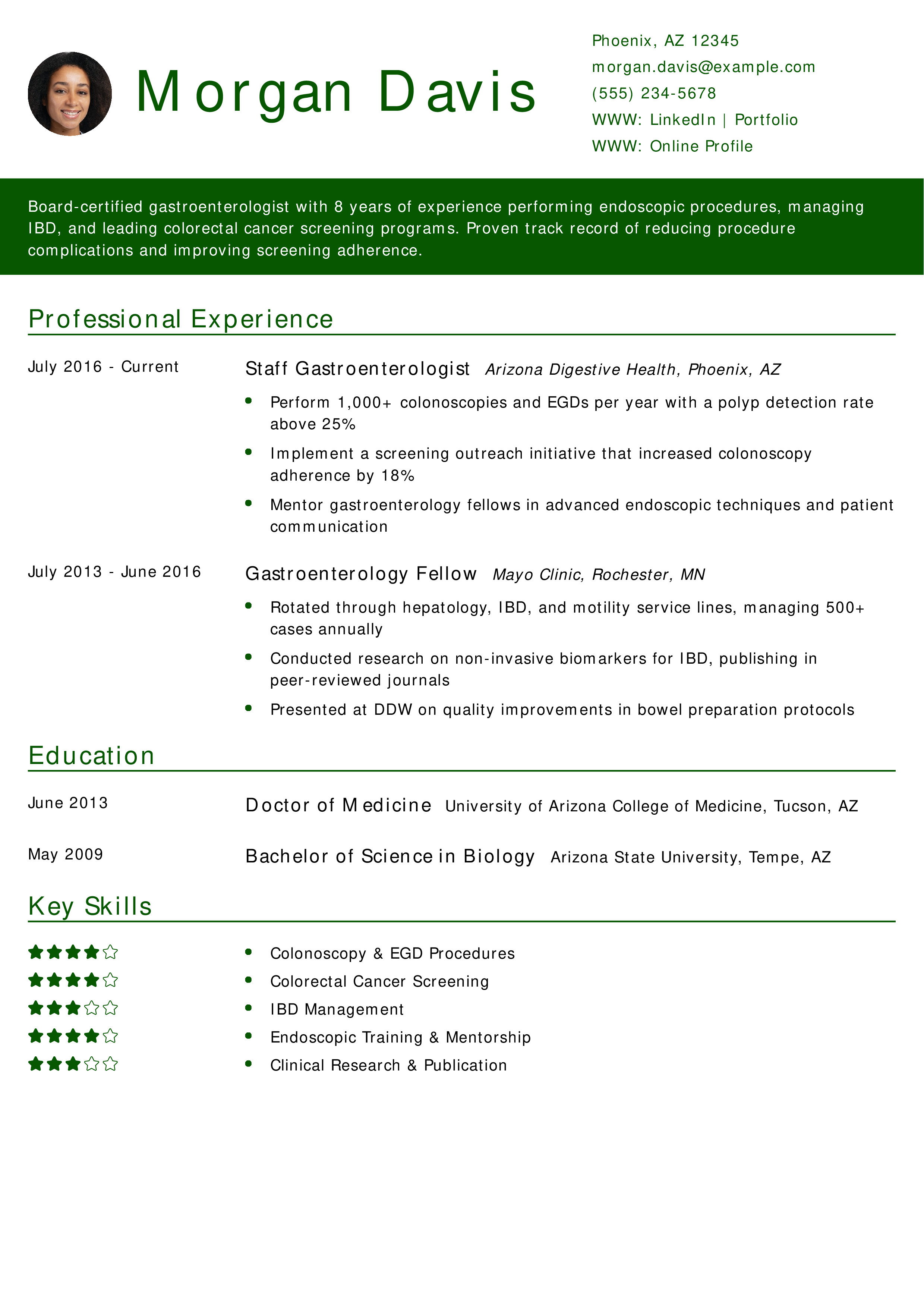
Why This Resume Is a Great Example
Morgan Davis’s resume combines high procedure volumes and detection rates with successful outreach metrics, demonstrating both technical skill and program leadership.
Key Tips
Highlight both procedural success rates and outreach results to show comprehensive program impact. For insights on CV vs. resume differences, see CV vs. Resume.
Orthopedic Surgeon Resume
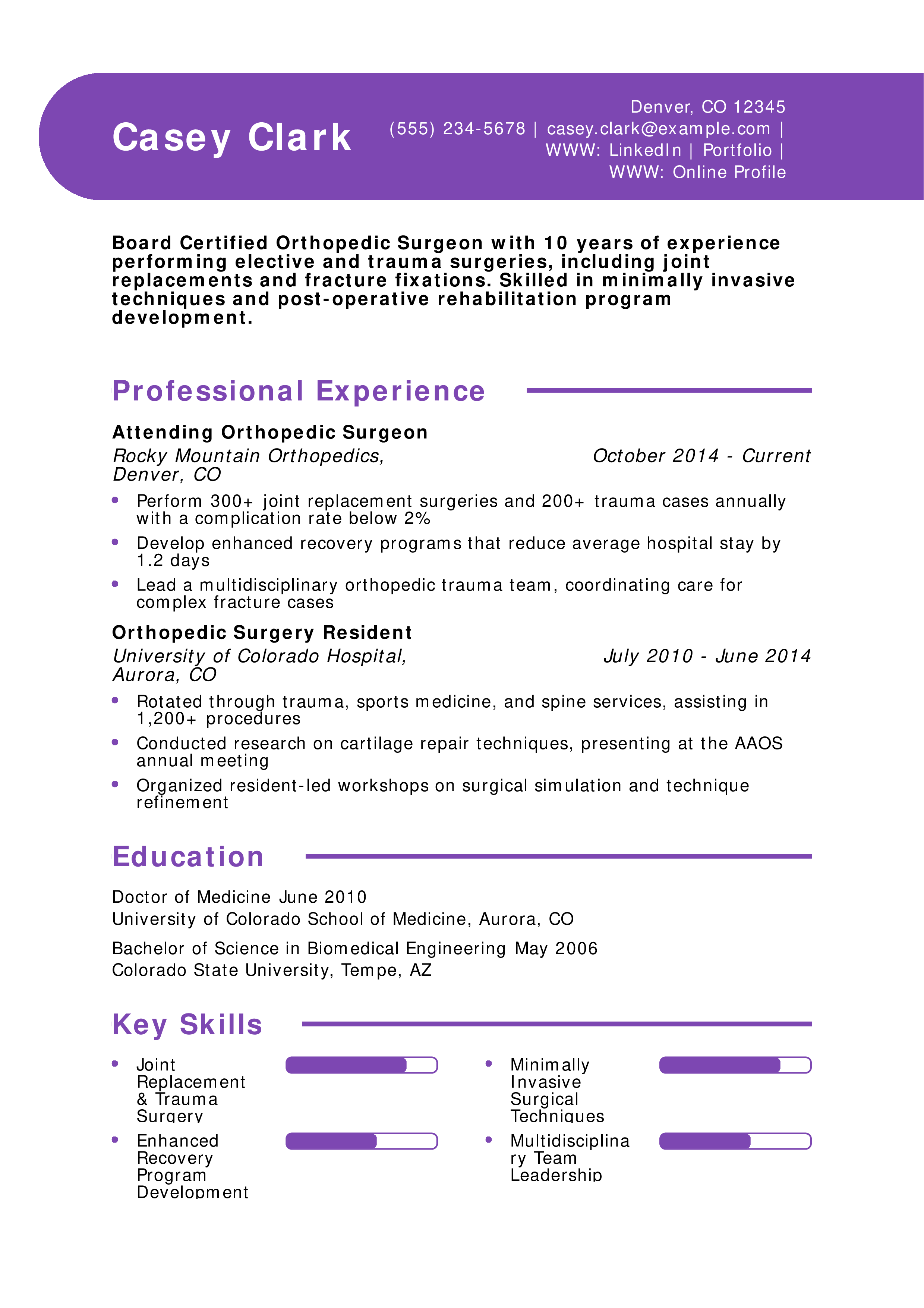
Why This Resume Is a Great Example
Casey Clark’s resume quantifies surgical volumes and complication rates, while also showcasing program development that measurably improves recovery metrics.
Key Tips
Include both case counts and complication percentages to underscore surgical expertise and patient safety. For more on resume interests, see the Resume Interests Section.
Ophthalmologist Resume
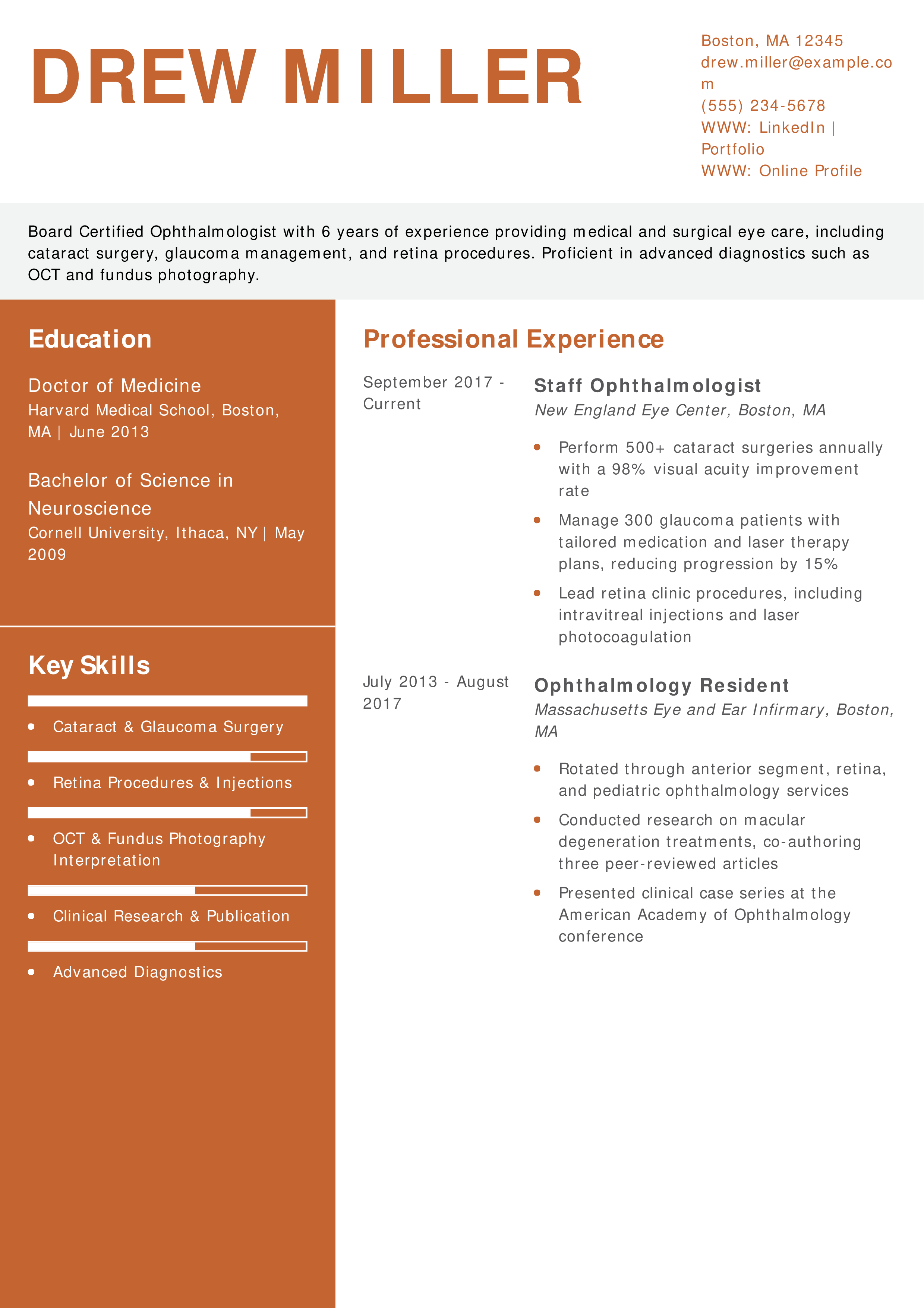
Why This Resume Is a Great Example
Drew Miller’s resume highlights high surgical volumes and patient outcome improvements, along with research contributions, demonstrating both clinical excellence and academic engagement.
Key Tips
Quantify surgical outcomes and research publications to showcase both hands-on skills and scholarly activity. For tips on technical skills, see Technical Skills for a Resume.
Hematologist Resume
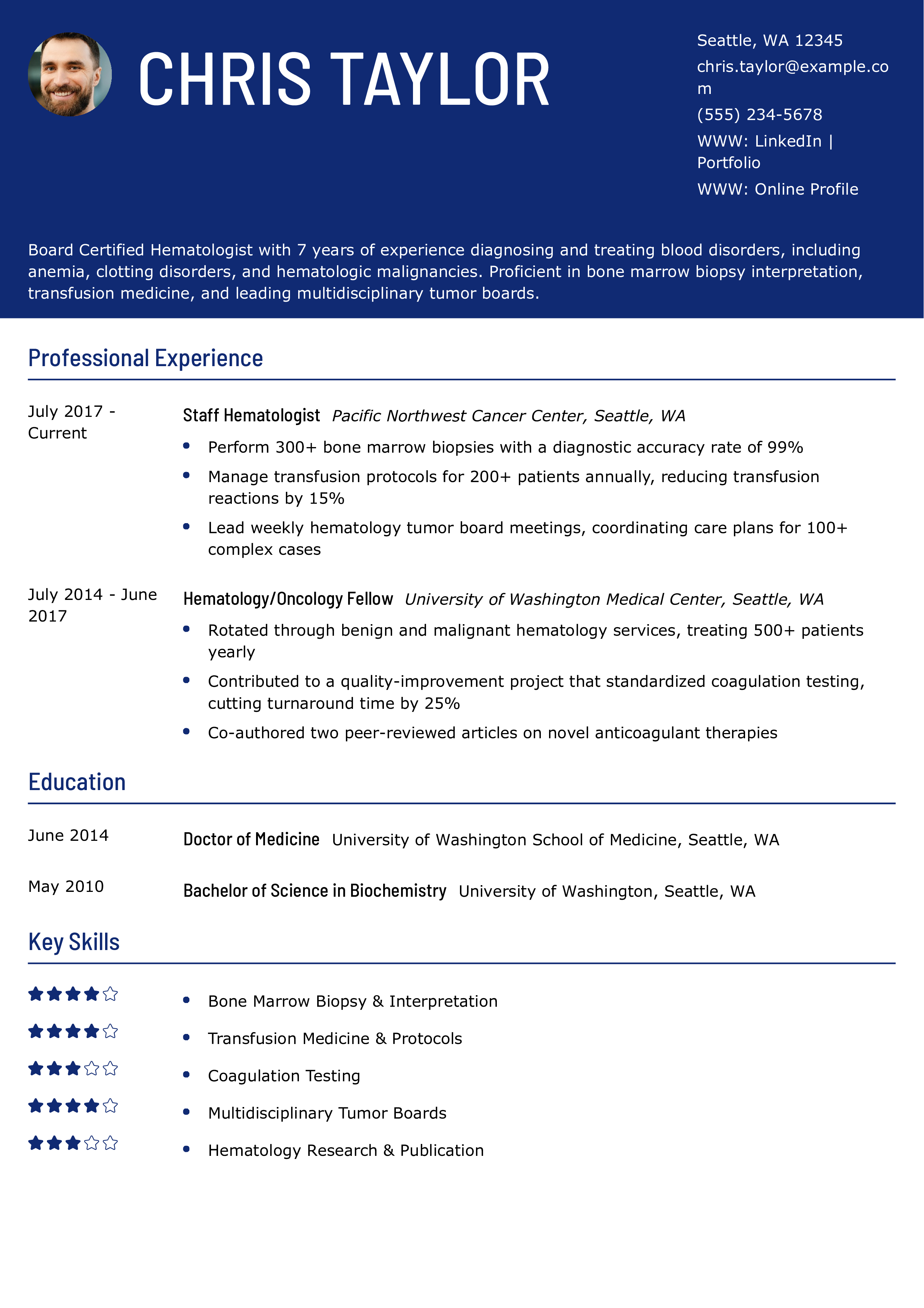
Why This Resume Is a Great Example
Chris Taylor’s resume quantifies both biopsy volumes and protocol improvements, demonstrating clinical precision and process innovation in hematology care.
Key Tips
Include both procedural counts and quality metrics to illustrate your technical expertise and impact. For advice on listing references, see How to List References on a Resume.
Rheumatologist Resume
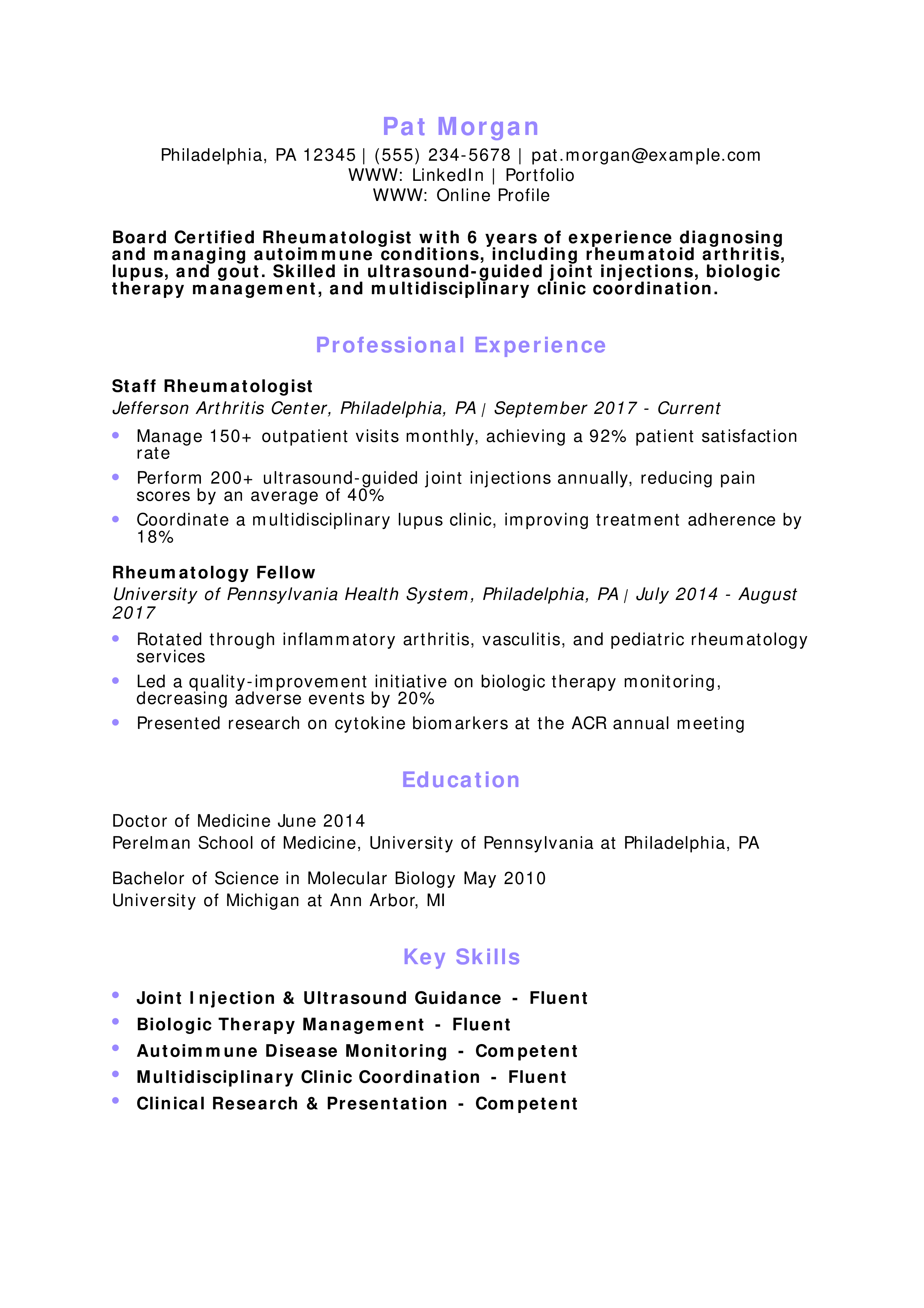
Why This Resume Is a Great Example
Pat Morgan’s resume ties high procedure volumes and patient satisfaction metrics to program improvements, highlighting both clinical skill and collaborative care.
Key Tips
Quantify patient outcomes and procedural success rates to showcase your clinical proficiency. To understand when to use a CV versus a resume, see CV vs. Resume.
Allergy & Immunology Specialist Resume
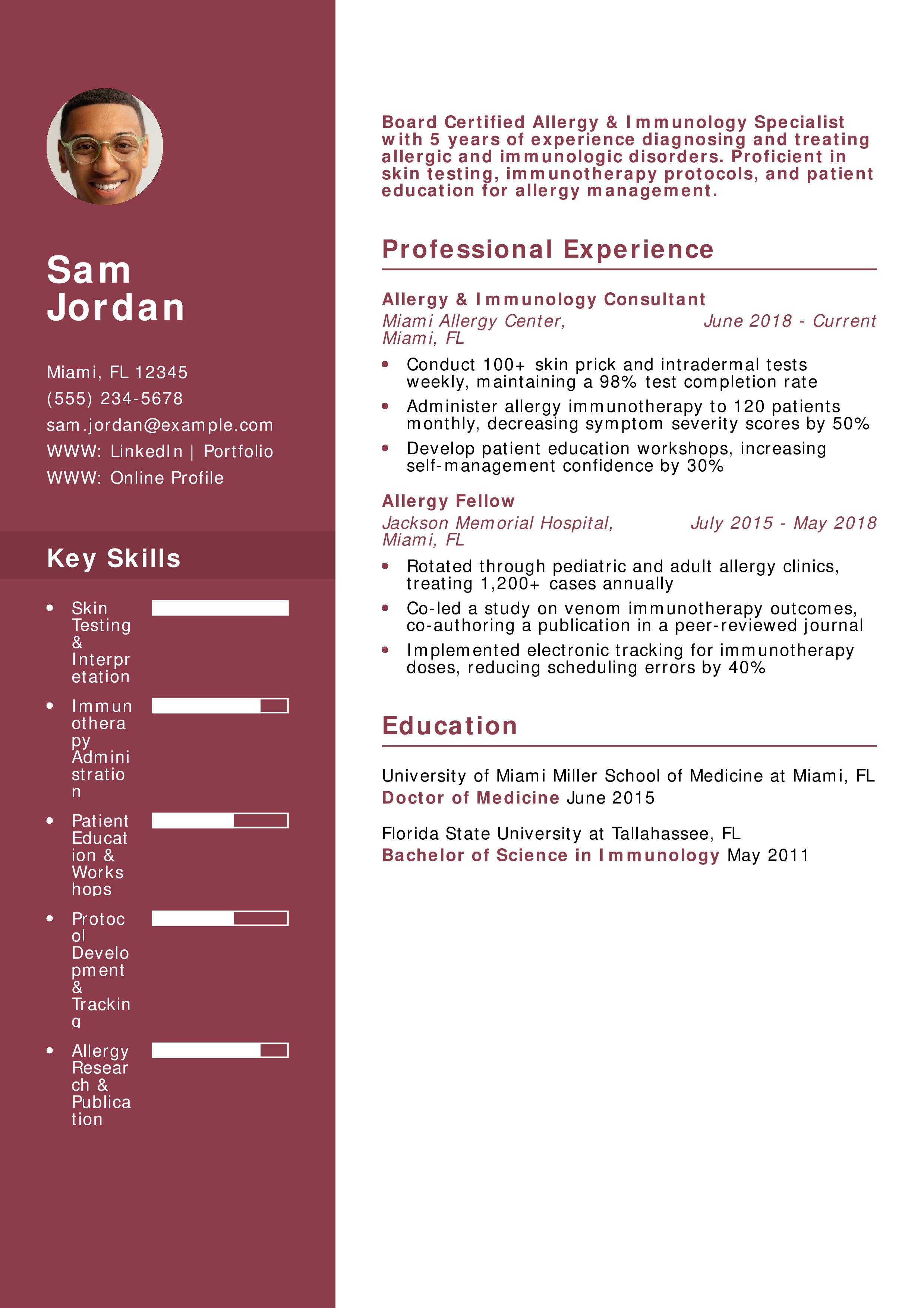
Why This Resume Is a Great Example
Sam Jordan’s resume showcases high testing and immunotherapy volumes along with education initiatives, demonstrating both technical skill and patient engagement.
Key Tips
Highlight both procedural counts and education outcomes to demonstrate comprehensive patient care. For advice on resume length and focus, see Should a Resume Be One Page.
Physiatrist (PM&R) Resume
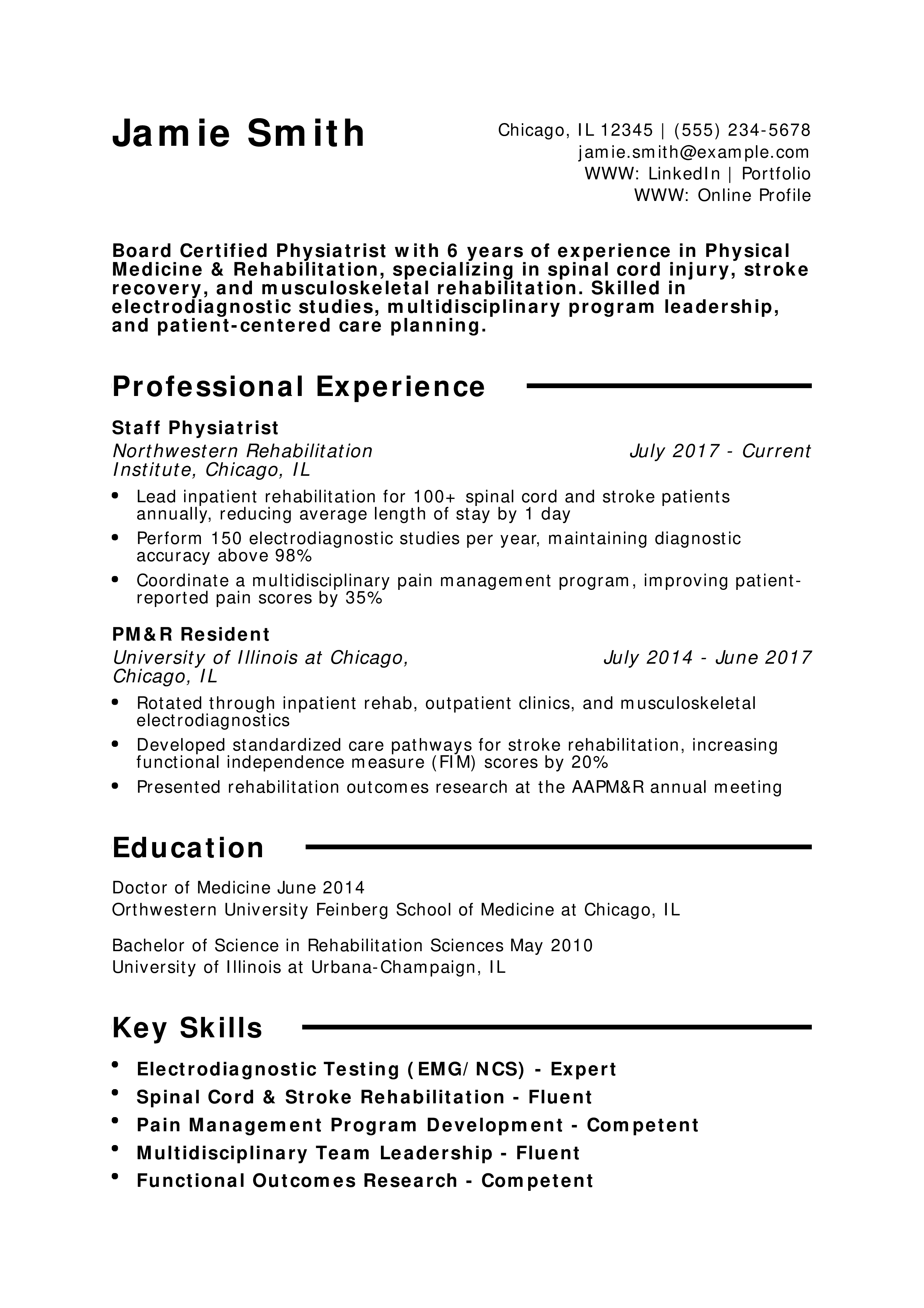
Why This Resume Is a Great Example
Jamie Smith’s resume quantifies rehabilitation outcomes and program improvements, highlighting both technical procedures and leadership in multidisciplinary care.
Key Tips
Use functional outcome metrics to demonstrate program effectiveness; including FIM score improvements can be particularly impactful. For inspiration on showcasing interests and certifications, see the Resume Interests Section.
Otolaryngologist (ENT) Resume

Why This Resume Is a Great Example
Alex Johnson’s resume quantifies surgical volumes, hearing assessments, and community impact, illustrating both clinical expertise and outreach leadership.
Key Tips
Include both technical procedure counts and community engagement metrics to showcase your full scope of practice. For guidance on noting expected graduation dates or licensure timing, see How to Put Expected Graduation Date on Resume.
Our templates are crafted by professional resume writers to make creating your resume quick, easy, and effective.
- Professional resume template downloads
- Customized cover letter generation
- AI resume writing support
- Career-building resources and advice
Medical Doctor Text-Only Resume Templates and Examples
How To Write a Medical Doctor Resume
1. Summarize your medical doctor qualifications in a dynamic profile
Providing a persuasive snapshot of your background as a physician is the best way to engage readers as they explore your resume. Your first sentence should give hiring managers relevant information about your job title, years of experience, and key qualifications. Demonstrate why you’re the best fit for the job you’re applying for. Communicate your value to potential employers by giving insights into your medical specializations.
For example, if you’re applying for a role in pediatric cardiology, emphasize this focus and your dedication to child health. Discuss your track record of detecting and managing congenital heart conditions in young patients directly in your profile. Show your track record of providing evidence-based to reduce mortality rates and drive positive patient outcomes.
Senior-Level Profile Example:
A board-certified physician with over 10 years of experience performing bariatric, general, and vascular surgeries for diverse patient populations. A proven track record of leading multidisciplinary health care teams and driving the delivery of patient-centered care.
Entry-Level Profile Example:
A board-certified family doctor with seven years of clinical experience, specializing in patient care, case management, family medicine, and communication. Adept at building positive relationships with patients by delivering compassionate and empathetic care.
2. Add your medical doctor experience with compelling examples
Whether fresh out of residency or a seasoned practitioner, your professional experience section needs to demonstrate your value as a physician. Focus on your accomplishments instead of creating a long list of your responsibilities. Employers want to know what you achieved and how you did it. Give them tangible evidence by using clinical data and key performance indicators (KPIs) to paint a clear picture of your accomplishments.
Highlight your dedication to clinical excellence by emphasizing accurate diagnoses, effective treatments, and patient-centered approaches. Mention your adherence to safety protocols and any initiatives or practices you implemented to reduce medical errors. Illustrate your ability to collaborate with nurses and multidisciplinary teams to improve clinical outcomes and patient satisfaction.
Senior-Level Professional Experience Example:
Physician, Hope Health, Los Angeles, CA
November 2015 – present
- Perform emergency and elective bariatric, general, and vascular surgery for over 5,000 patients and achieve an 81% success rate for positive outcomes in a high-volume hospital environment with a 1-to-6 patient ratio
- Educate and mentor over 30 clinical staff, including practice administrators, nurse practitioners, nurses, and physician assistants
- Lead initiatives to enhance patient satisfaction by delivering organization-wide training on patient-centered care standards to drive patient advocacy
Entry-Level Professional Experience Example:
Medical Resident, Family Medicine, Jones Family Practice, Pittsburgh, PA
August 2015 – September 2018
- Supported senior medical staff in the diagnosis and treatment of patients
- Participated in daily rounds while assisting senior physicians
- Provided personalized health care services to ensure patient satisfaction and well-being
3. Include education and certifications relevant to medical doctors
Post-secondary education and on-the-job residency are essential in your medical doctor resume. Include your license information and other pertinent certifications after listing your highest and most relevant degrees and residencies. Prove you’re dedicated to your specialty and up to date with the latest in medical practices.
While your state license is a requirement, board certifications are more of an expectation. Although not legally required for you to practice, they show your expertise in specialties and subspecialties of a particular field of medicine. Board certifications establish trust with patients and show your willingness to go beyond the bare minimum.
Education
Template
- [Degree Name]
- [School Name], [City, State Abbreviation] – [Graduation Month and Year]
Example
- Bachelor of Science in Biology
- Georgetown University Washington, DC, September 2007 – May 2011
Certifications
Template
- [Certification Name], [Awarding Organization] – [Completion Year]
Example
- Board Certified, State Medical Board of Ohio, 2018
- Board Certified, Medical Board of California, 2011
4. Make a list of your medical doctor-related skills and proficiencies
Hiring managers often use applicant tracking systems (ATS) to scan resumes for relevant skills and keywords that align with the position’s requirements. Get past the ATS by including medical and interpersonal skills that demonstrate your suitability for the role. Read through each job description and match your skills with those listed to ensure your resume makes it through the screening process. Here’s a list of common keywords you may encounter:
| Key Skills and Proficiencies | |
|---|---|
| Acute care | Clinical operations |
| Communication | Drug administration |
| Electronic health records (EHR) | Family medicine |
| General practice | Internal medicine |
| Leadership | Medication management |
| Oncology | Orthopedics |
| Patient advocacy | Patient-centered care |
| Patient education | Prescription management |
| Surgical procedures | Team management |
| Telemetry | Wound care |
5. Provide information on professional memberships
Reinforce your commitment to staying updated with industry trends and standards by disclosing your involvement in medical associations, boards, or committees. Begin by listing the relevant groups you’re a member of and your membership status (such as active, associate, or fellow). Additionally, emphasize any leadership roles or active participation within these organizations, such as committee chair positions or contributions to policy development.
Mention any conferences, workshops, or events you’ve attended or organized due to these memberships. It’s crucial to convey how your involvement in professional memberships enhances your knowledge and expertise, ultimately benefiting your career and the broader medical community.
How To Pick the Best Medical Doctor Resume Template
As a medical professional with extensive education and hands-on experience, selecting the right resume template is crucial. You need enough room to fit all your qualifications on one page without overwhelming readers. Look for a template that maintains a simple, clean design with all the essential sections. Steer clear of colorful, graphic-heavy templates that could detract from your content. Employers care more about your professional background than the aesthetic of your template.
Frequently Asked Questions: Medical Doctor Resume Examples and Advice
How can I customize my Medical Doctor CV for a specific job role?-
Customizing your Medical Doctor CV involves closely analyzing the job description and ensuring that you include the relevant skills and accomplishments that align with the employer’s needs. Use specific keywords from the job posting, and focus on tailoring your profile summary and professional experience sections to match the responsibilities of the position you're applying for.
What are common action verbs for medical doctor resumes?-
Incorporate action verbs to infuse an engaging and dynamic element into your writing. Avoid passive language such as “helped,” “worked,” or “responsible for,” as this phrasing can cause your accomplishments to appear as mundane job duties. Differentiate your usage of action verbs throughout your bullet points to keep your content fresh and engaging. Below, you’ll find a list of action verbs to build your professional experience section:
| Action Verbs | |
|---|---|
| Administered | Analyzed |
| Assessed | Collaborated |
| Communicated | Conducted |
| Coordinated | Developed |
| Diagnosed | Evaluated |
| Formulated | Identified |
| Implemented | Maintained |
| Managed | Planned |
| Provided | Resolved |
| Supervised | Treated |
How do you align your resume with a medical doctor job description?-
Over the next decade, the aging population and an uptick in rates of chronic illness are expected to increase the demand for medical doctors. According to the Bureau of Labor Statistics, the number of employment opportunities for physicians, surgeons, and medical doctors is expected to increase by 3% from 2021 to 2031.
Although the demand for medical doctors remains high, you’ll still need to align your resume with the job description to secure the best opportunities in the open market. Every job description is unique in its requirements, so be sure to scan the job description for skills that match your own.
For instance, suppose a health care facility is seeking a physician with expertise in emergency treatment. You would highlight your extensive experience in emergency medicine, your ability to efficiently triage patients, and your proficiency in emergency procedures. If a hospital is seeking a medical doctor with a strong history of patient advocacy, emphasize your commitment to health care equity and background in patient-centered care.
What is the best medical doctor resume format?-
Medical careers typically follow a linear and structured progression. Doctors start with medical school, progress to residency or fellowship, and then gain experience in various health care settings. The chronological format lets you present this timeline clearly and logically, showcasing your growth over time. Employers can easily see how you meet the experience, licensing, and certification requirements they have with this straightforward format.
How many pages should my medical doctor resume be?-
Generally, a medical doctor resume should be one page for candidates with fewer than 10 years of experience. A two-page resume is acceptable if you’re a seasoned professional with extensive accomplishments—but only if it provides meaningful details that strengthen your application. Tailor your content to the job, focusing on your most relevant qualifications.
Work history should typically cover the last 10 to 15 years. Older positions can be excluded or briefly summarized unless they’re highly relevant. A concise, focused resume demonstrates your ability to prioritize and communicate effectively.
Craft your perfect resume in minutes
Get 2x more interviews with Resume Builder. Access Pro Plan features for a limited time!

Craft a compelling cover letter to send along with your resume and increase your chances of landing an interview. The key to a persuasive cover letter is aligning it with the needs of the health care facility you’re applying to. Learn how to do this in your own letter with our comprehensive cover letter guide. Explore our nursing and health care cover letter guides for related examples.




